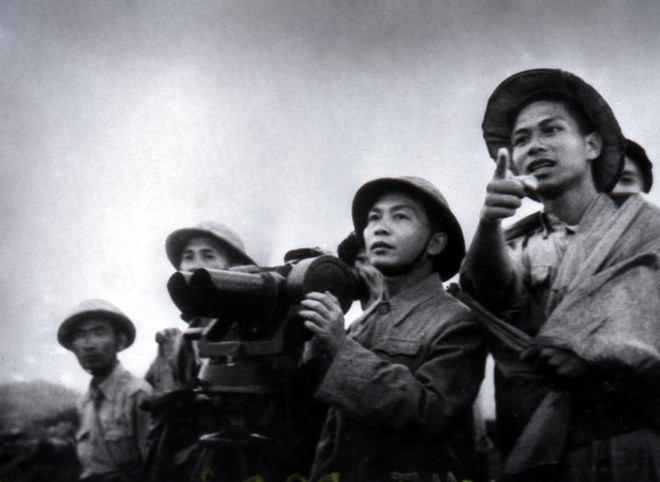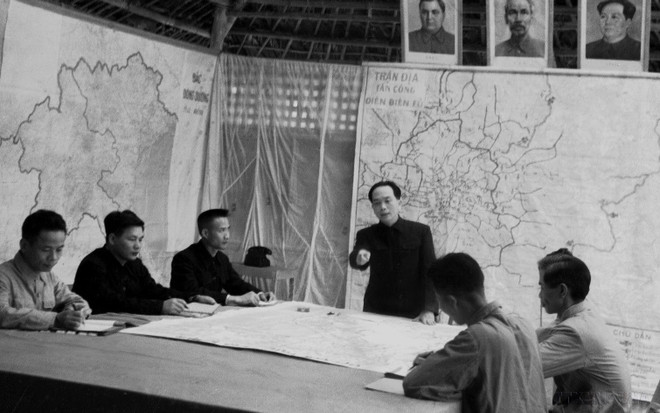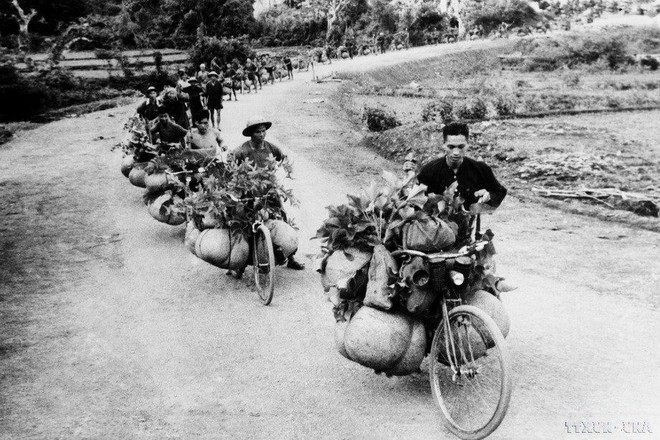Hanoi (VNA) – The Dien Bien Phu Campaign on May 7, 1954, went down in history as a glorious milestone of the entire Vietnamese Party, army, and people in the resistance war against the French colonialists (1945 - 1954).
The globe-shaking victory was an achievement by the entire army and people under the clear-sighted leadership of the Party and President Ho Chi Minh.
The generals of Vietnam, led by Vo Nguyen Giap, showed a great strategic mindset in this battle. From humble beginnings as a history teacher or rural youngsters, none had undergone training at any military schools.
General Vo Nguyen Giap – Commander-in-chief
A special highlight in the commander’s life of General Vo Nguyen Giap was the creative and timely decision that researchers recognised as one of the victory factors, which was shifting the combat strategy from “fast attack, fast victory” to “steady attack, steady advance”.
Born on August 25, 1911, Giap was the first general of the Vietnam People’s Army and the commander of the Dien Bien Phu Campaign. He was considered by many as a legend of the world’s military when commanding a young army to defeat a world military superpower.
In his memoirs “Dien Bien Phu, Rendezvous with history”, General Giap revealed: “On that day (January 26, 1954), I made the most difficult decision in my commanding life, which was deciding to shift the combatant strategy from fast attack, fast victory to steady attack, steady advance.”
When the Vietnamese army was preparing to pull artillery into the battlefield, he was very concerned about the strategy of “fast attack, fast victory”, but there weren’t enough grounds to reject this strategy.
After that, he called a meeting of the Party Committee of the battlefield for a brainstorm and to make a decision about the combat strategy. Having listened to all opinions, he pointed out all difficulties and repreated President Ho Chi Minh’s instruction before leaving for the campaign: “This battle is very important, we must fight to win. Fight only if you're sure of victory. If you're not sure, don't fight. Because if we fail, we will lose all.”

Considering his thorough analysis, the Party Committee agreed that if the “fast attack, fast victory” was maintained, there could be many difficulties within the battle to which concrete solutions had not been devised.
Given this, the general concluded that to ensure the ultimate goal of securing a definite victory, it was necessary to shift from “fast attack, fast victory” to “steady attack, steady advance”. Therefore, the offensive was suspended. All the troops were ordered to retreat, return to the gathering location, and pull the artillery out.
That was truly a hard decision to make for the general because soldiers had shed sweat and blood while huge efforts had been used to open 82km of paths and pull artillery into the battlefield, but now they had to pull artillery out. He wondered what soldiers would think. But if taking the risk, thousands of soldiers might lay down their lives on the battlefield.
Only when General De Castries surrendered and the last French soldiers in Dien Bien Phu were arrested could Giap feel at ease as he had fulfilled his duty towards President Ho Chi Minh and the Politburo.
He become a General of the people, and continued to lead the Vietnam People’s Army to the victory in the resistance war against the US, and later held many important positions of the country.
General Hoang Van Thai – Chief of the Staff
Together with Vo Nguyen Giap, Hoang Van Thai was one of the first 34 members of the Vietnam Armed Propaganda Unit for National Liberation, which later became the Vietnam People’s Army.
After the success of the August Revolution in 1945, in September the same year, President Ho Chi Minh assigned Thai to establish the General Staff of the National Army and serve as the first Chief of the Staff.
General Hoang Van Thai (real name Hoang Van Xiem) was born to a poor farming family in Tay An commune of Tien Hai district, Thai Binh province.
He acted as Chief of the Staff of the Dien Bien Phu Campaign.
On November 26, 1953, he led a group of cadres from the frontline Command on a fact-finding trip of the Northwest. These initial field studies were greatly helpful to the future campaign.

Recalling the historic decision by General Giap, Thai wrote: “Grasping the functions and tasks, resolutely bringing into play the revolutionary spirit to launch attacks even in difficult and complicated conditions, taking the fastest action, exerting efforts in fighting and building, and complying with the commander’s directions for the sake of the entire army’s victory. They were decisive subjective factors of the General Staff’s success in the 1953 - 1954 winter - spring war complexion and the historic Dien Bien Phu Campaign in particular.“
He was a general of battles and a kind-hearted man respected by the army and people, General Giap said when talking about Thai.
Major General Dang Kim Giang – logistics head
In General Giap’s memoirs “The path to Dien Bien Phu” and “Dien Bien Phu, Rendezvous with History”, Dang Kim Giang was a general who always stood side by side with the Commander-in-Chief during the Upper Laos, Border, Hoa Binh, Northwest, and Ha Nam Ninh campaigns.
Giang, real name Dang Van Rao, was born in 1910 in Minh Hung Commune of Kien Xuong district, Thai Binh province.
As Chairman for logistics and one of the four members of the Command and Party Committee of the battlefield, he took charge of ensuring military supplies and weapons for the Dien Bien Phu Campaign.
As the campaign’s combat strategy was changed, all the preparations made before January 26, 1954, returned to the starting line. At that time, the heavy burden was placed on Giang, who was Chairman of logistics for the campaign. He had to direct preparations to feed about 40,000 - 50,000 soldiers and tens of thousands of frontline workers for another three months until the victory on May 7, 1954.

The campaign was initially planned to last for three days but later turned out to last for 56 days amid mounting difficulties such as long distance, tough paths and rudimentary vehicles. It was like a challenge to Giang.
Educator Do Ca Son, who used to be a soldier in the campaign, recalled that Giang was the one taking care of each grain of rice and each bullet for the globe-shaking Dien Bien Phu Victory to be secured. He guaranteed enough food for the troops until the campaign was successful.
Le Liem – Chairman for political affairs
In General Giap’s memoirs “The path to Dien Bien Phu” and “Dien Bien Phu, Rendezvous with history”, Le Liem was always present beside the Commander-in-chief as a cadre in charge of political affairs and a pioneering and trustworthy general during major campaigns, including Dien Bien Phu.
Liem, real name Trinh Dinh Huan, was born in 1922 in Thuong Tin district, Ha Dong (which is now Hanoi).
The Vice Chairman of the General Department of Politics was appointed Chairman for political affairs of the Dien Bien Phu Campaign.
After the combat strategy changed, military units had to dig trenches. At that time, there was a major psychological struggle taking place. Political commissars had to work hard to maintain the morale of troops because soldiers had to fight and dig trenches at the same time right on the battlefield. The battle at Dien Bien Phu had already lasted for nearly two months.
Facing that fact, Liem wrote a letter for the Commander-in-Chief to send to soldiers to the frontline, expressing sympathies with their thoughts and aspirations. The wholehearted words in that letter seemed to give substantial encouragement to the soldiers who surmounted all tiredness and dangers to press on with performing their duties./.




























